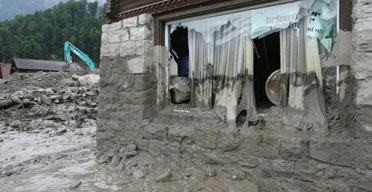Thursday, 1 November 2012
EXP 2 LIFE AFTER PEOPLE SUBMISSION
To expose the sense of decay and life after humans, I have decided to develop a cryengine environment that has been through earthquakes and tornadoes over the past 100 years. I will be using time lapse to demonstrate this idea, showing the decaying over the span of 30,40,60 then 100 years of decaying. Moss, cracks and overflow of plants and remains will be portrayed by using different textures, decals and objects. Through the time lapse, I will also be showing the change of weather and how the earth can dramatically change within a decade.
Tuesday, 30 October 2012
WEEK 5: PROGRESS
Showing gradual breakdown of the Rudin House. (Have yet to put textures on)
SHOWING SIGNS OF HUMAN OCCUPATION
Sunday, 7 October 2012
WEEK 4: NGUYEN
SHADING/ BLENDING

VIDEO INSPIRATIONS
Walle
Ideas of how to include the remains of human life (eg, Rubbish, scraps)
Ideas of how to create a deserted island showing hint of human life beforeI am Legend
The tone of the movie creates lots of suspense and shows how life would be with human extinction (well for most of the movie)
Jumanji
In some scenes, it shows the growth of vegetation against human objects
Jurassic Park 3
Shows how the lifeless island still remains "alive" with the dinosaurs around. The remains of buildings, cages and bridges are also depicted
Sunday, 30 September 2012
WEEK 3: FORENSIC ARCHITECTURE
3X REFERENCED IMAGES http://www.thehiat.org/
SKETCHES
Rudin House
2x NATURAL DISASTERS
FLOODSWhat damage would the natural disasters do to it?
Parts of the building will lose it's structural frame (eg. the walls or roofs will go missing, depending on how strong/ which direction the flood is heading). Most of the objects in the house will be damaged or would have gone missing with the flood. The remains of mud and dirt will be evident in and around the house.
What parts of the building will break?
For the Rudin House, I will probably make the levels split, making the first level of the house fall diagonally, lying on the ground. The walls and windows would probably be destroyed as well.
EARTHQUAKES
What damage would the natural disasters do to it?
Walls, roofs, parts of the structure will collapse due to the earthquakes (depending on how strong the earthquake is) Also if the floor is cracked or effected by the earthquake can change how the building is effected.
What parts of the building will break?
I want to create cracks and movement on the ground, influencing the Rudin house to fall.
What will grow/spread on the remaining parts of your building?
Moss and cracks will definitely appear on the house due to the aftereffects of floods and earthquakes. Decay and mud remains will also appear.
What would be cool to make the process of decay interactive?
I guess showing the process of how the house decayed slowly throughout the 100 years in slow motion would be cool. Showing how the cracks and moss gradually growing on the walls would also be a cool effect, as well as showing the structure falling apart as the person walks through the house. Incorporating music and allowing the decaying to follow the beat of the music would be cool too!
What evidence of the building being lived in will you carefully reveal to the viewer?
The remains of objects like broken vases, furniture and photo frames, torn down curtains....
Will you leave evidence of what disaster caused the building to be abandoned?
Yes.
PROGRESS
Making the building break apart using the boolean tool. Shall apply textures soon.
Monday, 24 September 2012
WEEK 2: SPECULAR AND BUMP MAPS
SPECULAR AND BUMP MAPS
RESEARCH ON 3X MATERIALS
CONCRETEprocess of making the material: composed primarily of aggregate (coarse gravel, limestone, granite, sand), cement and water
how long will it last: depends on the environment, but usually a very long service life
what makes them corrode: steel?
structural pros: can be recycled, fire resistance
structural cons: weak in tension, larger earthquakes can generate very large shear loads, can fail during severe earthquakes
what they are typically used for: architectural structures, foundations, brick/block walls, pavements, bridges, roads, parking structures, footings...
environmental impacts: big contribution to greenhouse gas emissions
STEEL
process of making the material: is an alloy made by combining iron and other elements such as carbon
how long will it last: long life service
what makes them corrode: water condensing from air or rain
structural pros: hardness, ductility, tensile strength
structural cons: less ductile than iron
what they are typically used for: major components in buildings, infrastructure, tools, ships, automobiles, machines, appliances
environmental impacts: 100% recyclable
GLASS
process of making the material: metallic alloys, ionic, melts, polymers
how long will it last: long life service
what makes them corrode: overheated water, chemicals
structural pros: brittle and transparent
what they are typically used for: windows, mirrors
environmental impacts: can be recycled unless broken, if shattered- may injure those/ objects around them
PROGRESS
Subscribe to:
Comments (Atom)


















































